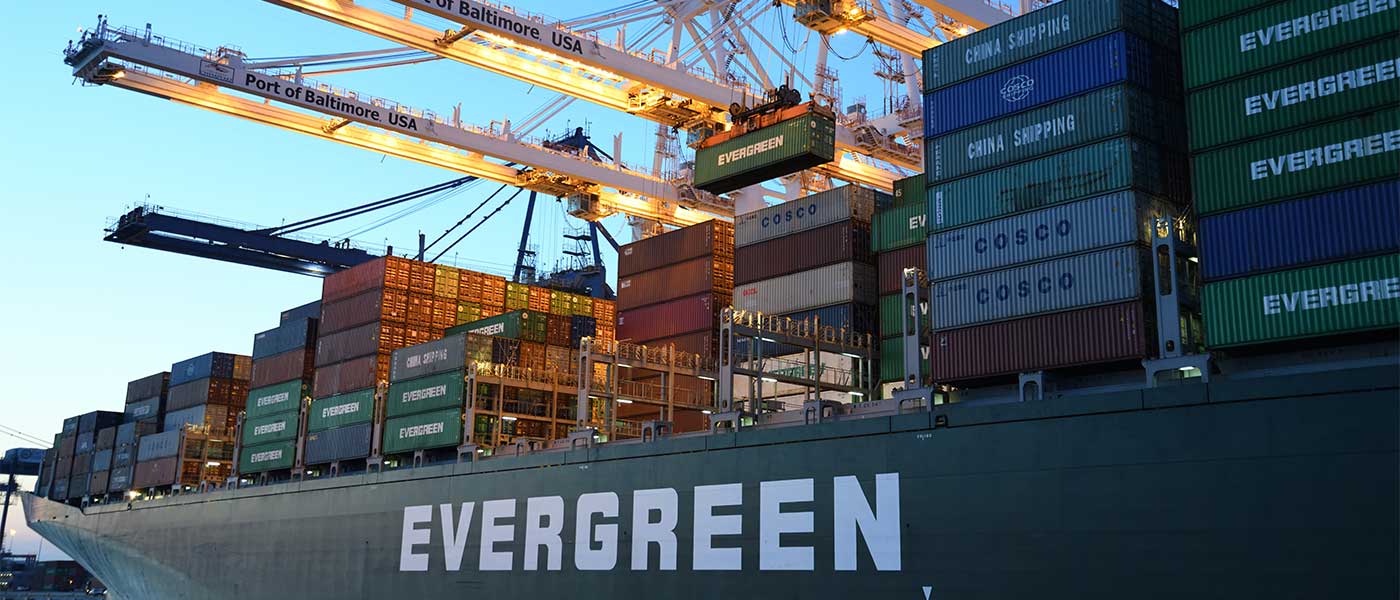Imagine the opportunities that awaits you when tapping into the 11th biggest e-commerce market in the world. Imagine selling to a tech-savvy population where more than 90% of the household engage in online shopping. Australia presents e-commerce sellers with a high purchasing power, an opportunity to sell locally and go global thanks to multiple trade agreements, and a robust economy that fuels a rapidly growing e-commerce sector. This is the reality waiting for e-commerce sellers wanting to launch their business in Australia.
This comprehensive guide serves as your gateway to unlocking the vast potential of this dynamic market, how to reach shoppers and sell to them and a cost-effective way to delight customers and win them for life.
Unlocking the Potential of Australia’s Thriving E-commerce Market

For international e-commerce sellers, Australia presents a compelling market brimming with opportunity. The country has a mature marketplace that customers shop from, a high internet penetration rate that favours online shopping, a stable economy, increased demand for specialty products, and trade agreements that favour global expansion.
Why Australia Should Be on Your E-commerce Radar:
Strong Economic Fundamentals: Australia boasts a robust economy with a growing middle class and a high disposable income, creating a strong consumer base for online shopping.
Tech-Savvy Population: Australians are highly engaged with technology, with internet penetration exceeding 90%. This translates to a population comfortable and familiar with online shopping experiences.
Evolving E-commerce Landscape: The Australian e-commerce market is experiencing significant growth, projected to reach over $60 billion by 2025. This trajectory indicates a thriving market ripe for exploration.
Key Facts and Figures: Australia’s Booming E-commerce Landscape:
E-commerce Market Size: Over $50 billion in 2023, with consistent year-on-year growth.
Online Shoppers: Over 22 million Australians, representing more than 80% of the population, shop online regularly.
Average Online Spend per Person: Exceeds $2,500 annually, highlighting the significant purchasing power of Australian consumers.
Popular Product Categories: Fashion, electronics, homewares, and beauty products are amongst the most popular categories purchased online in Australia.
The combination of a strong economy, a tech-savvy population, and a rapidly growing e-commerce market make Australia a highly attractive option for international e-commerce sellers. By understanding the key characteristics of this market, businesses can effectively tailor their strategies to tap into its vast potential.
Understanding the Australian Consumer
For e-commerce sellers venturing into the Australian market, understanding the local consumer is paramount. This section delves into the diverse landscape of Australian online shoppers, providing insights into their profiles, shopping preferences, and popular product categories.
Who Are Your Australian Customers?
- Tech-Savvy Millennials: This generation, aged 25-40, is the most active online shopping group, comfortable with technology and familiar with various digital platforms.
- Time-Conscious Professionals: Busy professionals, often aged 35-55, value convenience and appreciate reliable and efficient online shopping experiences.
- Value-Conscious Shoppers: Australians, across various age groups, are known to be price-conscious. They actively compare prices and seek value for money when making online purchases.
Demystifying Australian Shopping Habits and Preferences:
Understanding how Australians shop, the channels where they engage become crucial for e-commerce success.
- Preferred Channels: Australians are active across various online platforms, with marketplaces like eBay, Amazon, and Shopify enjoying high popularity. Social media platforms, such as TikTok, also play a role in influencing purchase decisions.
- Expectations for E-commerce Sellers: Australians expect swift and reliable delivery options, secure payment gateways, and transparent pricing. A seamless user experience with clear product information and efficient customer service is crucial.
- Mobile-First Approach: Australians are increasingly using smartphones and tablets for online shopping, making mobile-friendly websites and optimised user experiences essential.
Popular Product Categories:
Australian consumers exhibit strong preferences for specific product categories:
- Fashion: Clothing, footwear, and accessories remain top sellers, with a focus on both international and local brands.
- Electronics: The latest smartphones, laptops, and other consumer electronics enjoy consistent demand.
- Homewares: Australians value quality and functionality in homeware products, with furniture, kitchenware, and home décor being popular choices.
- Beauty Products: Skincare, cosmetics, and personal care items see consistent demand, with a growing focus on natural and organic products.
E-commerce Platforms in Australia
For e-commerce businesses entering the Australian market, selecting the right platform is crucial. Here’s a glimpse into some popular options:
Established Marketplaces:
eBay: A household name in Australia, eBay boasts a large active user base and offers a familiar selling environment for both seasoned and new sellers. Notably, it requires attention to competitive pricing and effective product listings.
E-commerce Website Builders:
Shopify: This user-friendly platform empowers sellers to create their own online stores with comprehensive functionalities. While offering greater control over brand presentation, it requires investment in website development and marketing.
Emerging Social Commerce Platforms:
TikTok: This rapidly growing social media platform is increasingly influencing purchase decisions, especially among younger demographics. Engaging with potential customers through creative content and influencer partnerships can unlock new sales opportunities.
Open-Source Solutions:
WooCommerce: This open-source plugin for WordPress allows businesses to integrate e-commerce functionalities into their existing websites. While offering significant customization and cost-efficiency, it requires technical expertise for setup and maintenance.
Choosing the right platform hinges on individual business needs, resources, and target audience. Evaluating factors like platform fees, features, scalability, and integration capabilities is crucial for a successful e-commerce journey in Australia.
Australia’s Trade Partners
Australia boasts a vibrant trade network, with Southeast Asia (SEA) playing a significant role. While China remains Australia’s largest trading partner, several SEA countries are prominent destinations for Australian exports.
Key SEA Trading Partners:
Indonesia: Australia’s second-largest trading partner in Southeast Asia, Indonesia is a massive market for Australian e-commerce products. Popular categories include beauty and personal care items, fashion apparel, baby products, and household goods.
Singapore: This global trade hub is a key destination for Australian e-commerce exports. Singaporean consumers are known for their tech-savviness and openness to trying new brands. Australian sellers can find success with high-quality goods across various categories, like fashion, electronics, and homeware.
Vietnam: A rapidly growing economy with a young, tech-savvy population, Vietnam presents exciting opportunities for Australian e-commerce ventures. Australian agricultural products like grains can thrive online alongside fashion and lifestyle goods.
Thailand: Australia enjoys a strong e-commerce trade relationship with Thailand. Australian sellers can find success exporting manufactured goods like homeware and electronics, along with popular agricultural products like wool and cotton.
International Shipping:
Australia boasts a well-developed international shipping infrastructure, offering various options for businesses exporting to SEA:
Sea freight: This cost-effective option is ideal for large volumes of goods, although it has longer transit times.
Air freight: The fastest option, air freight caters to time-sensitive cargo but comes at a higher cost.
Understanding Australia’s diverse trade partnerships and navigating the efficient international shipping network are crucial factors for businesses aiming to capitalise on the growing opportunities in Southeast Asia.
Setting Up Your E-commerce Business in Australia
Venturing into the Australian e-commerce landscape requires careful planning and a solid understanding of the local regulations, customer expectations, standard fulfilment timelines, e-commerce marketplaces and business environment. This guide equips you with the key steps to establish your e-commerce business in Australia and pave the way for success.
Navigating the Legal and Regulatory Landscape:
- Business Registration: Register your business with the Australian Securities and Investments Commission (ASIC) and acquire an Australian Business Number (ABN).
- Taxation: Familiarise yourself with Goods and Services Tax (GST) regulations. Businesses with an annual turnover exceeding $75,000 must register for GST and collect it on most sales.
- Import Regulations: Understand import regulations if you plan to source products from overseas. Obtain necessary permits and licences to comply with customs requirements.
Taxation and Compliance for E-commerce Sellers:
- GST Compliance: Register for GST, correctly calculate and collect GST on sales, and file regular GST returns with the Australian Taxation Office (ATO).
- Recordkeeping: Maintain accurate records of all your income, expenses, and business transactions.
- Consumer Guarantees: Understand and comply with the Australian Consumer Law (ACL) regarding refunds, returns, and warranties.
Choosing the Right Logistics Partners:
1. Economical Last-Mile Delivery: Look for a 3PL provider with access to a network of last-mile delivery carriers. This allows you to choose the most cost-effective option based on order location and weight, optimising your shipping spend. Alternatively, some 3PLs can manage carrier selection, automatically selecting the most economical option for each order.
2. Brand-Centric Pick and Pack: Your brand image extends to the delivery experience. A 3PL partner offering customizable pick and pack operations ensures your products are presented professionally, reflecting your brand’s values.
3. Optimised Storage and Expiry Management: Efficient storage solutions are crucial for smooth order fulfilment. Your 3PL partner should offer storage options that enhance picking and packing efficiency. Additionally, features like expiry sorting ensure products with a longer shelf life are prioritised for shipment, minimising the risk of expired goods reaching customers.
4. Flexible Storage Infrastructure: As your business grows in Australia, your storage needs will evolve. A 3PL offering flexible storage solutions allows you to scale up or down based on demand. This reduces storage and operational costs during low seasons while ensuring you have ample space to accommodate peak sales periods.
5. Diverse Shipping Options: Australian customers expect a variety of delivery choices. Partner with a 3PL that offers a comprehensive network of shipping providers with services ranging from next-day fulfilment to international shipping. This caters to diverse customer needs and preferences, enhancing your overall customer experience.
Establishing Your Brand Presence in the Australian Market:
- Website Localisation: Ensure your website is user-friendly and accessible for Australian audiences. Consider localization elements like using Australian English, displaying prices in AUD, and offering local payment methods.
- Marketing and Branding: Develop targeted marketing strategies tailored to the Australian market and consumer preferences. Utilize relevant social media platforms and explore partnerships with local influencers.
- Customer Service: Provide exceptional customer service that caters to the specific needs and expectations of Australian consumers. Offer multiple communication channels and respond promptly to inquiries and complaints.
Marketing and Sales Strategies for Australian E-commerce
Capturing Hearts and Carts: Marketing and Sales Strategies for Australian E-commerce
Reaching your target audience and converting them into loyal customers is crucial for success in the Australian e-commerce landscape.
Understanding Your Audience, Choosing Your Channels:
- Tech-Savvy Millennials: This group actively utilises various online platforms. Leverage search engine optimization (SEO) for organic website traffic, and consider paid advertising on search engines and social media platforms like Facebook, TikTok and Instagram.
- Time-Conscious Professionals: This demographic values convenience and efficiency. Explore email marketing with targeted campaigns and offer personalised product recommendations. Additionally, consider advertising on platforms like LinkedIn, where they might be spending their professional downtime.
- Value-Conscious Shoppers: This group is price-sensitive and actively researches online. Implement comparison shopping engine (CSE) optimization to ensure your products are visible on platforms like Google Shopping and PriceMe. Additionally, offer competitive pricing, promotions, and loyalty programs to attract and retain customers.
Social Media Strategies for Engaging Australian Consumers:
- Embrace Authenticity and Transparency: Australians value genuineness. Share authentic brand stories, showcase customer testimonials, and engage in open communication to build a follower base through trust.
- Optimise for Mobile Consumption: Australians heavily utilise mobile devices for online activities. Ensure your social media content is optimised for mobile viewing and consider offering features like shoppable posts for a seamless purchasing experience.
- Collaborate with Local Influencers: Partnering with relevant micro-influencers can help you reach targeted audiences and build brand awareness. Choose influencers who resonate with your brand values and target audience.
- Leverage Visual Storytelling: Australians are drawn to visually appealing content. Utilize high-quality images, engaging videos, and user-generated content (UGC) to capture attention and showcase your products in a relatable way.
Growth and Success in the Australian Market
Building a thriving e-commerce business in Australia requires a customer-centric approach, adaptation to evolving trends, and embracing growth opportunities.
Nurturing Loyalty Through Customer Service:
- Prioritise Customer Experience: Provide exceptional customer service throughout the entire purchasing journey. Offer multiple communication channels with prompt responses, address inquiries effectively, and resolve issues with empathy and transparency.
- Personalised Customer Interactions: Go beyond transactional interactions. Implement loyalty programs, offer personalized product recommendations, and celebrate milestones to build meaningful connections.
- Embrace Reviews and Feedback: Encourage customer reviews and actively solicit feedback. Utilise constructive criticism to improve your offerings and demonstrate your commitment to continuous improvement.
Capitalising on Trends and Opportunities:
- Embrace Forecasting and Data Analytics: Leverage data analysis through your active sales channels, order management system offered by a logistics partner to consolidate all sales and inventory data into one dashboard. This helps you to identify seasonal trends and anticipate potential volume spikes. This proactive approach ensures you have sufficient inventory and resources to meet customer demand.
- Transparency in Tracking and Delivery: Provide clear and transparent order tracking information throughout the delivery process. Australians value real-time updates and appreciate knowing the status of their purchases.
- Elevate the Unboxing Experience: Create a memorable first impression by investing in high-quality order packaging for your products and considering adding personalised wrapping elements, inserts or small gifts.
- Offer Sustainable Packaging Options: Australians are increasingly conscious of environmental impact. Offer eco-friendly packaging options and highlight your commitment to sustainability to resonate with environmentally conscious consumers.
Expanding Reach with Multi-channel Selling:
Online Marketplaces: Leverage established marketplaces like eBay, Amazon, and Kogan to reach a wider audience and benefit from their existing customer base.
Social Commerce: Explore platforms like Instagram and TikTok to showcase your products in a visually appealing way and leverage influencer collaborations to reach targeted audiences.
Brick-and-Mortar Integration: Consider integrating with a physical store if feasible. This allows customers to interact with your brand in person, potentially leading to online purchases or vice versa.
What to look for in a logistics partner for your AU business?
Choosing the right partner for your Australian business hinges on several key factors, ensuring your products reach customers seamlessly and efficiently. This guide explores essential aspects to consider during your selection process.
Data-Driven Insights and Forecasting:
- Market Knowledge: Look for a partner with extensive experience and knowledge of the Australian market, including regulatory nuances, regional variations, and delivery timeframes.
- Data Analytics: Choose a partner who utilises data analytics to provide insights into delivery trends and seasonal fluctuations. This forecasting ability allows you to optimise inventory management and anticipate potential volume spikes.
- Order Management System: Partnering with a 3PL that has a robust OMS can allow you to plan inventory better, thanks to the real-time visibility as well as sales history. Additionally, you can also place a request to inbound your shipment from the wholesale supplier to your destination warehouse in Australia.
Affordable Pricing and Transparency:
- Cost-Effectiveness: Compare pricing structures and service offerings to find a partner that aligns with your budget and business needs. A logistics partner can offer preferential rates, also help consolidate mid mile and last mile, which in turn, helps you save money. Using flexible inventory storage space vs dedicated warehouses reduces operational costs and can also prove to be beneficial.
- Multiple Payment Options: Consider a partner offering flexible payment options, such as pay-as-you-go models or volume-based discounts, catering to your specific business model and growth trajectory.
Multi Channel Fulfilment and Integration:
- Diverse Service Spectrum: Choose a partner providing a comprehensive range of fulfilment services, including warehousing, packing, shipping, and returns management. This streamlines your operations and allows you to focus on core business activities.
- Seamless Integration: Ensure the logistics partner integrates seamlessly with your existing e-commerce platform and other technology systems. This facilitates smooth order processing, inventory management, and real-time tracking capabilities.
Cross-Border Expertise and Trade Services:
- Global Network: If you plan to source products internationally or offer cross-border shipping, choose a partner with a global network and expertise in handling customs clearance and import/export regulations. This ensures efficient movement of goods while adhering to relevant trade policies.
- Value-Added Services: Consider partners offering additional services like trade finance, freight forwarding, or duty management, further simplifying cross-border operations and mitigating potential risks.
Scalability and Adaptability:
- Growth Projection: Choose a partner capable of scaling their services to accommodate your anticipated business growth. This ensures consistent service quality and efficient operations as your order volume increases.
- Technological Innovation: Look for a partner constantly innovating and adopting new technologies to optimise processes and cater to evolving customer expectations. This adaptability ensures you stay competitive in the dynamic e-commerce landscape and allows you to scale as your business grows.
Conclusion
The skills and information required to successfully negotiate the complexities of the Australian e-commerce market is plenty. Now that you have a firm understanding of the legal environment, consumer behaviour, and key tactics, you can capitalise on this booming market. Remember that the key to success is comprehending the subtleties of the industry, putting into practice ideas that work for your target market, and laying a solid foundation through dependable logistical partnerships.
Does the Australian market catch your eye? Partner with Locad and make cross-border expansion a reality! Sign up now!











